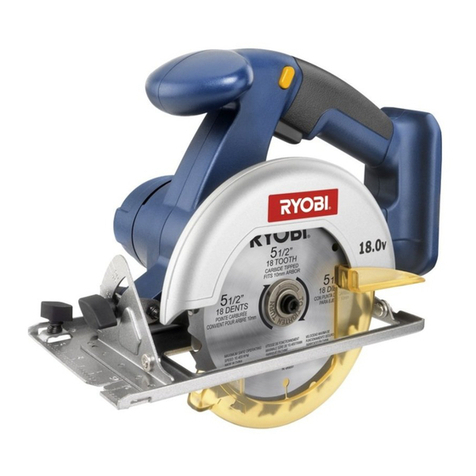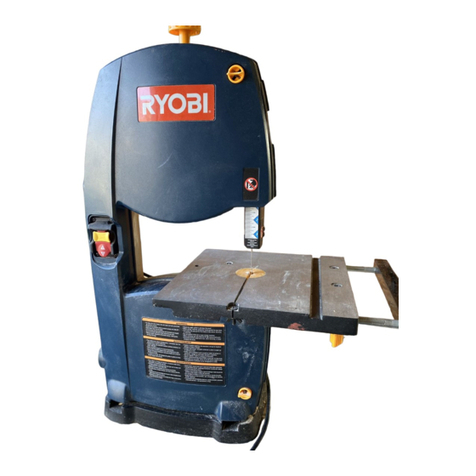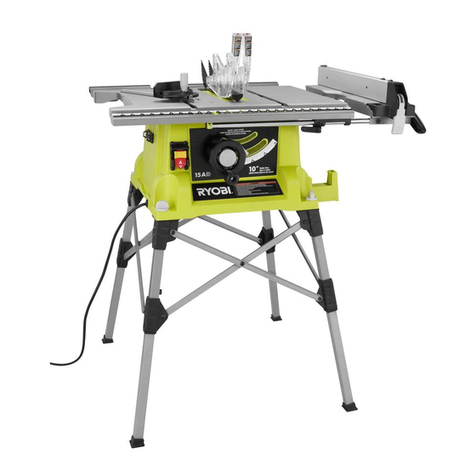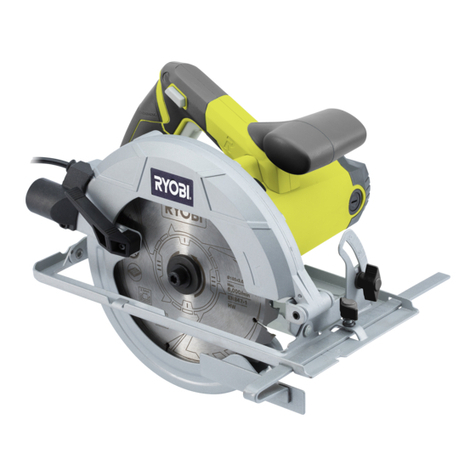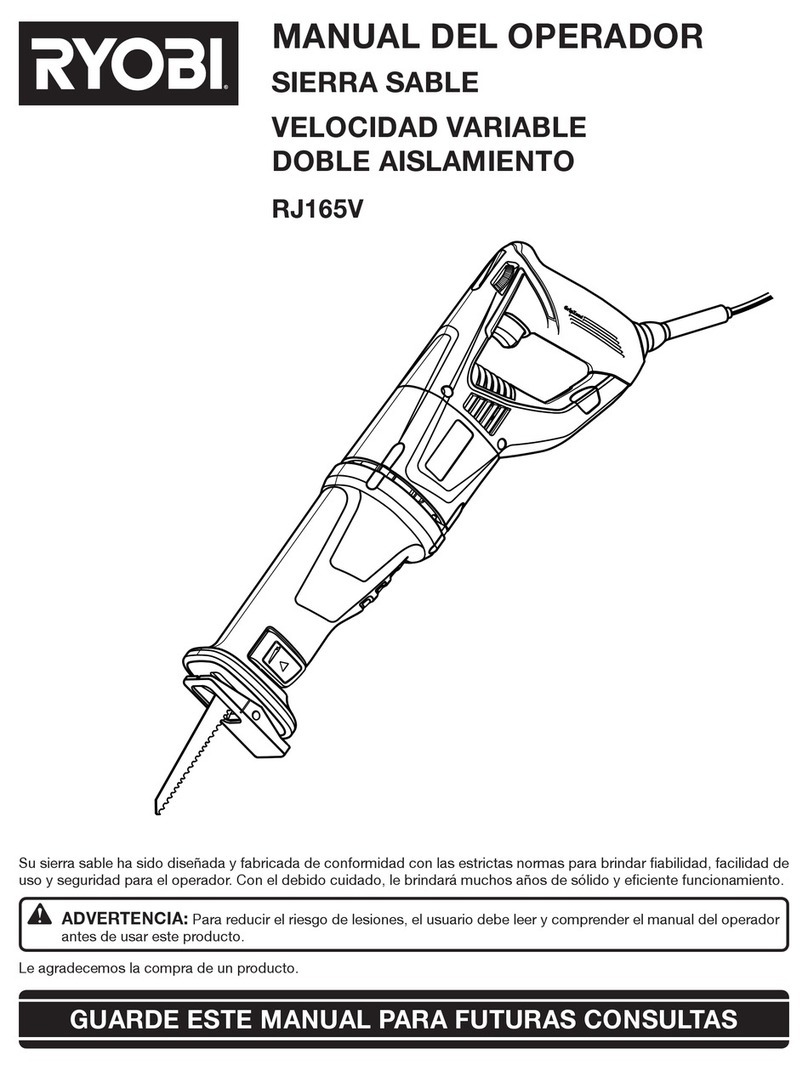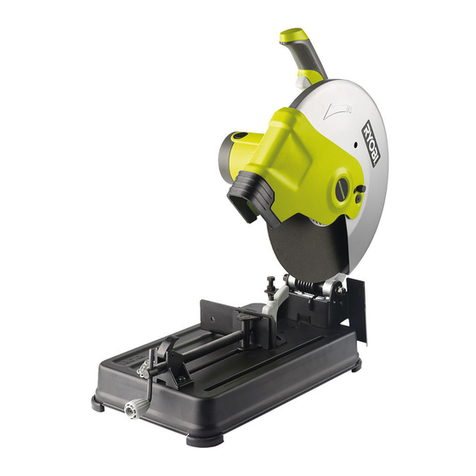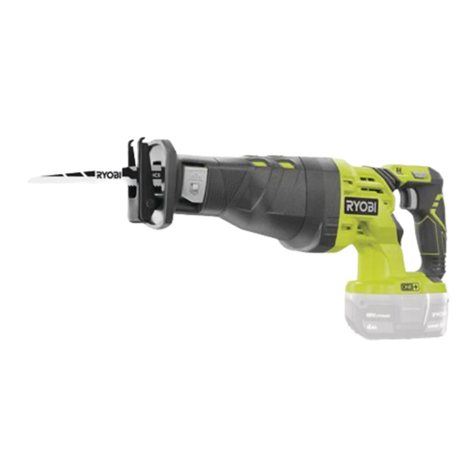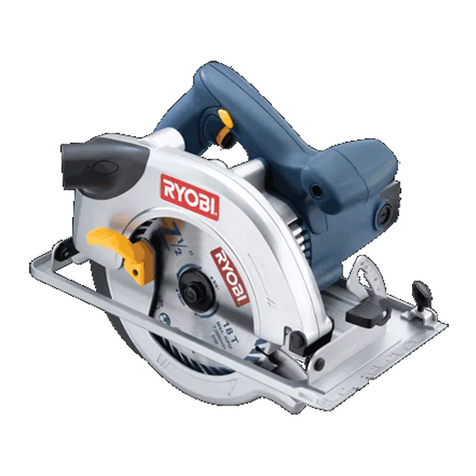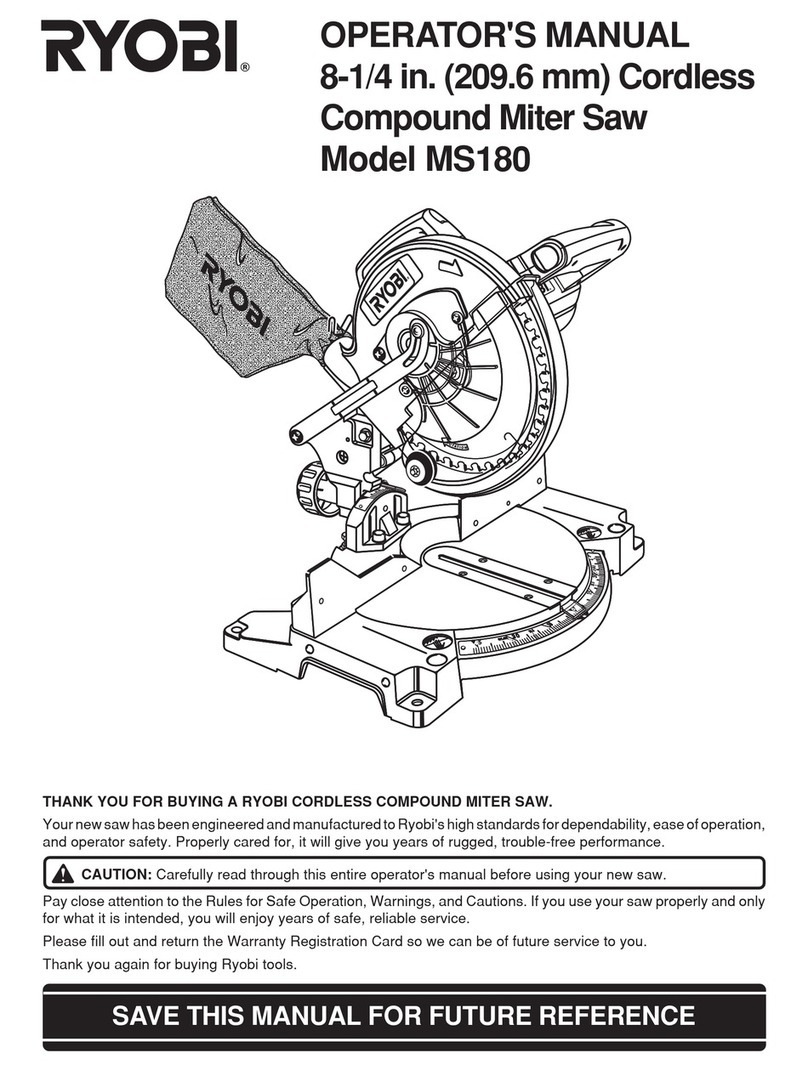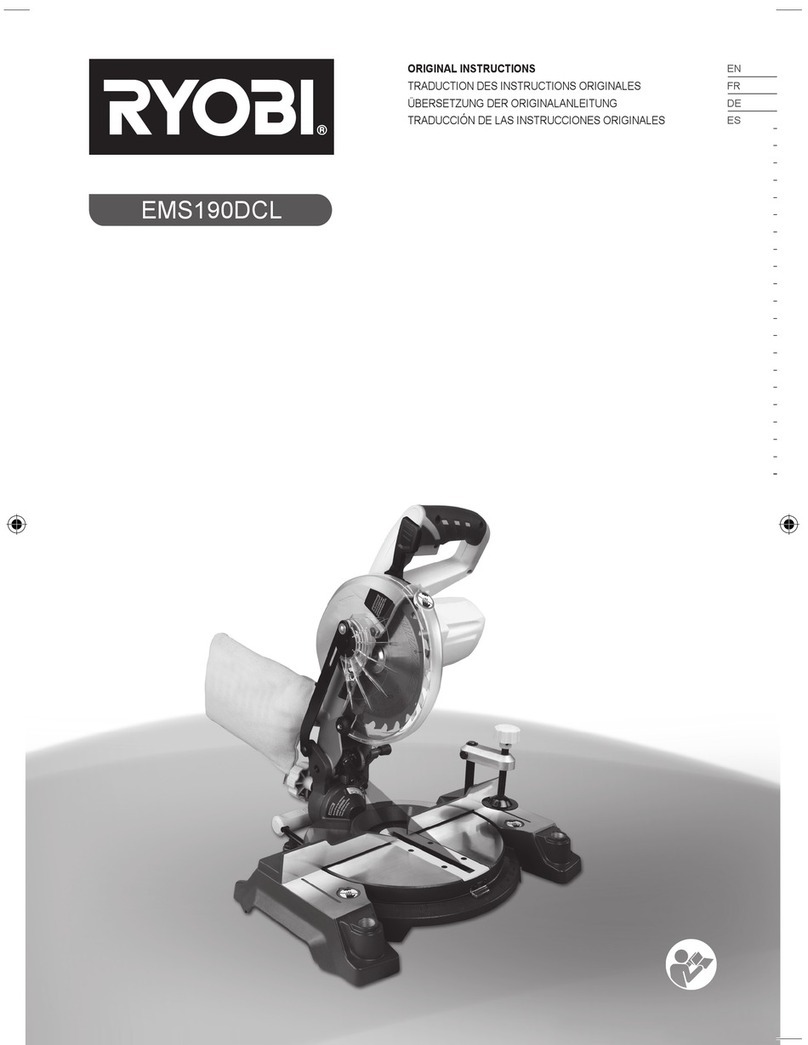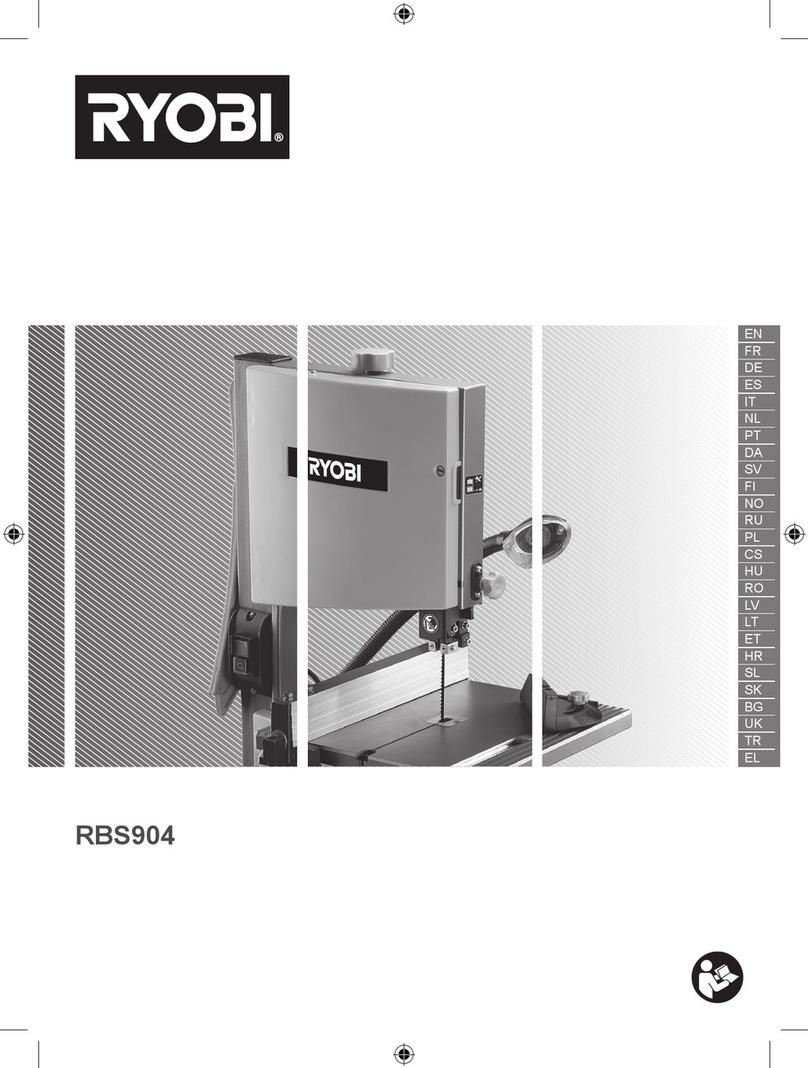
4 — English
GENERAL SAFETY RULES
SPECIFIC SAFETY RULES
DANGER! Keep hands away from cutting area and
wheel. Keep your second hand at least 3 inches away
from the cutting wheel at all times.
Keep your body positioned to either side of the cutting
wheel,but not inline withthecutting wheel.KICKBACK
could cause the saw to jump backwards.
Do not reach underneath the work. The guard cannot
protect you from the wheel below the work.
NEVER hold piece being cut in your hands or across
your leg. It is important to support the work properly
to minimize body exposure, wheel binding, or loss of
control.
Hold tool by insulated gripping surfaces when
performing an operation where the cutting tool may
contact hidden wiring. Contact with a “live” wire will also
make exposed metal parts of the tool “live” and shock
the operator.
When ripping always use a rip fence or straight edge
guide. This improves the accuracy of cut and reduces
the chance for wheel binding.
Always use wheels with correct size and shape
(diamond vs. round) arbor holes. Wheels that do
not match the mounting hardware of the saw will run
eccentrically, causing loss of control.
Never use damaged or incorrect wheel washers
or bolts. The wheel washers and bolts were specially
designed for your saw for optimum performance and
safety of operation.
Know your power tool. Read operator’s manual care-
fully. Learn its applications and limitations, as well
as the specific potential hazards related to this tool.
Following this rule will reduce the risk of electric shock,
fire, or serious injury.
Always wear eye protection with side shields marked
to comply with ANSI Z87.1. Following this rule will
reduce the risk of serious personal injury.
Protect your lungs. Wear a face or dust mask if the
operation is dusty. Following this rule will reduce the
risk of serious personal injury. Always wear a dust mask
when making dry cuts.
Protect your hearing. Wear hearing protectors during
extended periods of operation. Following this rule will
reduce the risk of serious personal injury.
Battery tools do not have to be plugged into an
electrical outlet; therefore, they are always in
operating condition. Be aware of possible hazards
when not using your battery tool or when changing
accessories. Following this rule will reduce the risk of
electric shock, fire, or serious personal injury.
Keep cutting tools sharp and clean. Properly main-
tained cutting tools with sharp cutting edges are less
likely to bind and are easier to control.
Use the power tool, accessories and tool bits etc., in
accordance with these instructions and in the manner
intended for the particular type of power tool, taking
into account the working conditions and the work to
be performed. Use of the power tool for operations dif-
ferent from those intended could result in a hazardous
situation.
BATTERY TOOL USE AND CARE
Ensure the switch is in the off position before inserting
battery pack. Inserting the battery pack into power tools
that have the switch on invites accidents.
Recharge only with the charger specified by the
manufacturer. A charger that is suitable for one type
of battery pack may create a risk of fire when used with
another battery pack.
Use power tools only with specifically designated
battery packs. Use of any other battery packs may create
a risk of injury and fire.
When battery pack is not in use, keep it away from
other metal objects like paper clips, coins, keys, nails,
screws, or other small metal objects that can make a
connection from one terminal to another. Shorting the
battery terminals together may cause burns or a fire.
Under abusive conditions, liquid may be ejected from
the battery, avoid contact. If contact accidentally
occurs, flush with water. If liquid contacts eyes,
additionally seek medical help. Liquid ejected from the
battery may cause irritation or burns.
SERVICE
Have your power tool serviced by a qualified repair
person using only identical replacement parts. This will
ensure that the safety of the power tool is maintained.
WARNING!
To reduce the risk of injury, user must read instruction
manual.
When servicing a power tool, use only identical
replacement parts. Follow instructions in the
Maintenance section of this manual. Use of unauthorized
parts or failure to follow Maintenance instructions may
create a risk of shock or injury.
